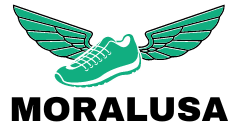8 Best Shoes For Extensor Tendonitis – Women and Men
Extensor tendonitis is a relatively common condition among runners, but some are unaware of its existence until it becomes a problem for them. It is named for the extensor tendons running along the top of the foot. For people who run frequently, these tendons flex and stretch more than it happens for the average person. This excessive use is what generally causes the condition, although it can result from wearing poorly fitted shoes, or shoes that are too tight.
The condition is painful, and this can hamper any runner’s routine. It can be disheartening to be unable to be as active as you want to be, especially if running is a major part of your fitness regimen. Fortunately, there are ways to deal with this problem and restore the health of your feet. Some exercises have been shown to provide relief for people dealing with extensor tendonitis. More importantly, some shoes can help runners to maintain their active routines.
The best shoes for extensor tendonitis meet all the criteria that runners have for their footwear. They are made from quality materials and have features that keep feet comfortable during long runs. Arch support and cushioning are vital for the best walking shoes for flat feet and overpronation. Additional stress on the feet can worsen the condition, so the shoes should be able to absorb shock, while giving the runner some bounce. Some running shoes are not capable of meeting the demands of this popular activity.
The shoes listed below meet the standards of the industry and can help runners who are dealing with extensor tendonitis.
8 Best Shoes For Extensor Tendonitis
[acf field=”list”]Dansko Women’s Paisley
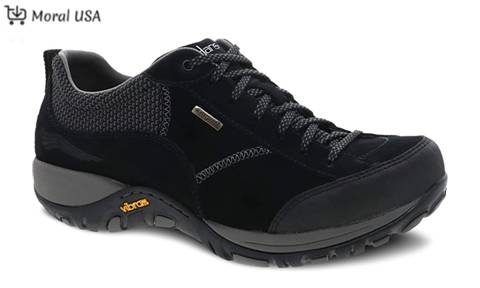
This shoe will hit all the right marks with even the pickiest of runners. The design is simple yet attractive but the emphasis is clearly on functionality. The Dansko Women’s Paisley Waterproof Sneaker has sleek, strong lines meant to complement the shape of the foot. There are no bright colors in this range, showing that this shoe is meant for serious runners who focus more on the activity than they do on style. It provides support for the arches and is very good at absorbing shock, making running easier for runners struggling with extensor tendonitis. Custom fibers help to absorb moisture, so the feet will feel drier and more comfortable.
- This shoes has an effective odor control feature.
- It is waterproof, so it will not get heavy during runs in the rain.
- The footbed is removable.
- Many custom orthotics can be used with this shoe.
- The sole sometimes wears down quicker than comparable brands with the same amount of use.
- Some runners would prefer a few brighter colors added to the product range.
ASICS Men’s Gel-Cumulus 20
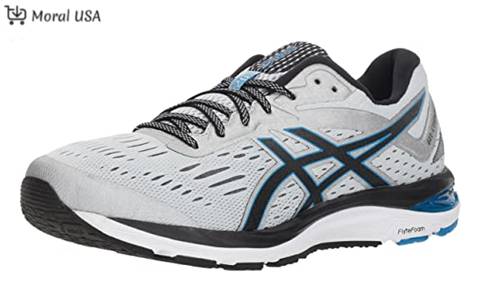
Any runner who is on the lookout for the best walking shoes for flat feet and overpronation should consider this the ASICS Men’s Gel-Cumulus 20. The design has a bit more flourish than is generally seen in other brands, but this shoe is all business when it comes to running. It was designed specifically to suit this activity. It has a guidance system that accommodates the heel strike and toe push off. With rubber soles for great traction, this shoe will help people with extensor tendonitis to get more from their runs or walks. It has a platform feel, so there is more distance between your feet and the surface. This superior cushioning adds a bit of bounce to each step, and provides some protection for joints and ligaments. With a roomy toe box, there is no need to worry about stress or soreness.
- The shoe’s material is reflective. If you prefer to run during the later hours this will help in maintaining visibility.
- The footbed is made of foam, which molds to the feet and keeps them comfortable.
- Comfort is enhanced by the breathable fabric.
- The shoe has a slightly narrower heel than other running shoes, so some runners may think it is a bit tight.
- The outsole is sturdy enough for running, but shows quicker wear when compared to other shoes in the same range.
Brooks Men’s Adrenaline GTS 19
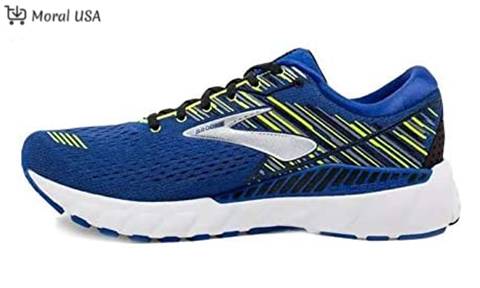
This is a running shoe that was designed to provide stability for the runner. It has a 12 mm drop dual-density midsole that reduces pressure on the feet. It is suitable for different arch types, minimizing the challenge that runners sometimes have finding the right shoe. The DNA LOFT cushioning system keeps the feet cradled in softness, without giving up any of the needed responsiveness. With a roomy toe box and breathable engineered mesh, this running shoe is ideal for long exercise sessions. With hard carbon rubber under the heel, this shoe can take the punishment of frequent heel strikes, and there is plenty of traction provided by the soft rubber at the forefoot.
- The Guiderail Support System complements the gait and positioning of the foot with each step, minimizing stress on the feet and knees.
- The 3D Fit Print upper provides the kind of stability that every runner desires, and it holds the shoe securely even during long runs.
- The soft tongue is easy on the extensor tendons.
- It has no medial post.
- Changes to the design over previous versions may not suit some loyalists of the brand.
New Balance Men’s Zante v2
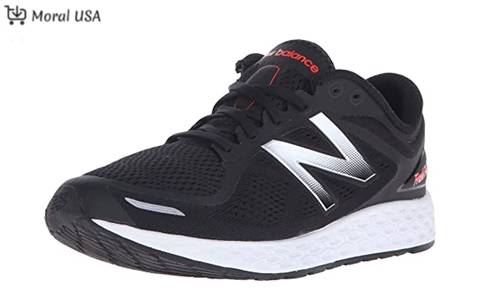
This shoe is lightweight and is suitable for running or walking, but still sturdy enough to stand up to frequent use. It gives feet the comfortable, cushioned feel, but does not lack responsiveness. This solid combination makes it a good choice for long-distance runners. The cushioning and high traction also make this shoe suitable for those who prefer to add some speed to their runs. The shoe is a blend of synthetic and textiles, with a sturdy, traction-enhancing rubber sole. The upward curve of the toe is meant to help runners transition quickly after the heel strike.
- The breathable fabric helps to keep the feet cool while running.
- The shoe weighs only 8.7 ounces.
- The material is flexible, so the shoe hugs the foot to complement the shape.
- It is comfortable enough for all-day wear.
- Some people experience slight tightness in the arch area.
- The toe box is not very wide, although, in some cases this can be addressed by the flexibility of the material.
Mizuno Men’s Wave Inspire 14
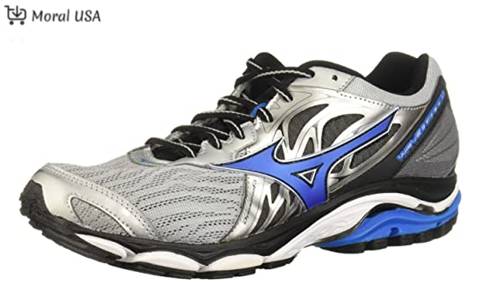
With sleek lines and no-sew overlays, this fits the bill for anyone who wants to add some style to their running. It has a comfortable fit, and is designed to provide that extra support needed to minimize stress on the feet. This is a lightweight shoe that offers plenty of bounce. It cradles the entire foot for a comfortable feel. The redesigned upper has an open mesh construction giving it a more comfortable feel and making the shoe more breathable. Even the outsole has been improved over previous versions. It has been redesigned to provide better traction even when running on wet surfaces.
- It provides extra arch support which is important for anyone with pronation issues.
- It provides a stable and smooth run, helping to keep the runner relaxed and focused.
- It has semi-stretchable laces which help to keep the shoe secure when running.
- The midsole is designed to reduce impact, plus it helps with guidance for the heal strike and toe push off.
- A few users have experienced fit issues with this shoe.
- It is slightly heavier than shoes within the same range.
Brooks Men’s Ghost 10
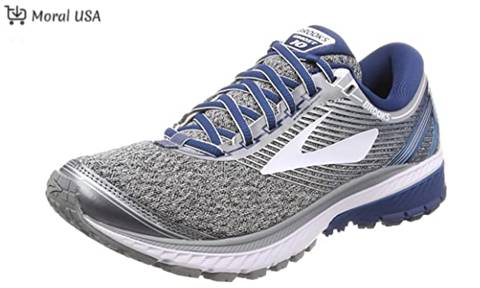
Long-time users of this running shoe will be happy with the many upgrades. It still offers the great fit the brand is known for. It is lighter than previous versions, and has solid arch support. The lightweight, synthetic overlays and soft fabric lining combine to give this running shoe a comfortable feel. The plush tongue and collar help to keep the feet relaxed even on longer runs. Despite the sturdy design, the shoe is not bulky, so runners will never feel sluggish due to the shoe feeling heavy.
- It has plenty of cushioning to cradle the feet and prevent stress to the tendons.
- The strong outsole provides plenty of traction.
- The toe box is roomy, but the shoe does not feel loose on the feet.
- There is not much reflective material, so it is not the best choice for running in low light conditions.
- It performs well on dry surfaces, but can lose traction in rainy conditions.
- Overall, the shoe is not as durable as some other types of running shoes.
Saucony Women’s Ride 8
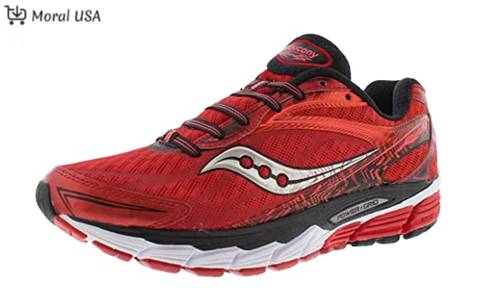
This shoe is an ideal choice whether you actively compete or just run occasionally. It has features that are specifically engineered to improve the gait of runners. The Saucony Women’s Ride 8 Running shoe also enables more stable movement of the feet. The attention to detail makes it one of the best walking shoes for flat feet and overpronation. The no-sew overlays give the shoe an outstanding fit. The POWERGRID cushioning system runs from the heel to the toe, giving it nearly unsurpassed responsiveness that helps in conserving energy.
- The shoe is very lightweight, which helps with the runner’s focus.
- The outsole is durable, so it is suitable for going on longer runs.
- The padded heel cup reduces the impact of every heel strike, which helps to protect the ankles and knees.
- The toe box is relatively narrow so the fit may be a problem for some runners.
- Over time, the laces may begin to show signs of wear.
Saucony Women’s Kinvara 8
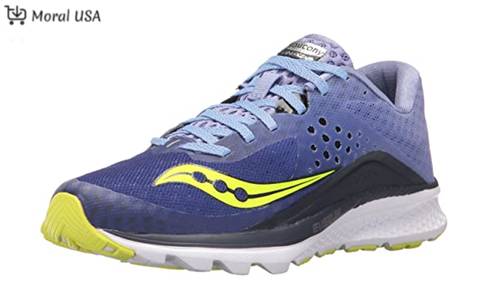
This is a no-frills shoe that gives the user a relaxed fit, and moves with the feet to enhance the stride. Its specially engineered cushioning system absorbs impact well, and aids in each takeoff. It provides exceptional support for the midfoot, so there is less stress on the arches. This is particularly beneficial for anyone dealing with pronation or other foot issues. The seamless design aids in the flexibility of this shoe. This running shoe was designed to be durable, so whether you like marathons or short jogs, it is up to the task.
- The material is breathable, so it is suitable for wearing for long periods.
- In addition to being highly responsive, it is lightweight.
- It has built-in pronation control features which is not common to all running shoes. These not only support the arch, they also help in maintaining the proper gait.
- The laces of this shoe are not very strong, so there may be some breakage after a long period of use.
- People who do not need extra arch support may find the midfoot technology tight on the feet.
Running is a healthy activity, but you must be careful to choose the right equipment. Not only does wearing the right shoes play a big part in your running success, it help you to get more from your runs. Running shoes should protect your feet and joints from overuse. Runners who have extensor tendonitis still want to keep up with their daily runs. Luckily, some shoes are designed to provide the support they need to minimize pain, and to aid in recovery.
To find the best shoes for extensor tendonitis, stick with trusted and recognized brand names. Trying to save money on running shoes in this instance could be a mistake. A poorly designed shoe might worsen the condition and limit your activity in the long run.
Pay attention to the midfoot support and the flexibility and strength of the outsole. These are among the most important considerations for protecting feet. It is also wise to learn about stretches you can perform before running. These will help to alleviate the pain from exterior tendonitis, and prevent injury. This also applies to people who prefer brisk walks instead of running. Other runners who have dealt with this problem can also be a good source of advice on choosing the right running shoes.
How to Choose the Best Shoes For Extensor Tendonitis?
There are certain things you should consider when choosing shoes that won’t aggravate or cause extensor tendonitis. These include:
Fit: It’s important that your shoes fit well. Shoes that are too big or too small can put unnecessary stress on the tendons in your feet, which can lead to or aggravate extensor tendonitis.
Support: Look for shoes that offer good arch support and heel stabilization. This will help reduce the strain on the tendons in your feet.
Cushioning: Shoes with good cushioning will help absorb the impact of each step, which can help reduce stress on the tendons.
Flexibility: Look for shoes that are flexible in the forefoot. This will allow your toes to move more freely and reduce the risk of extensor tendonitis.
Support: Look for shoes that offer good arch support and heel stabilization. This will help reduce the strain on the tendons in your feet.
Shock absorption: Shoes with good shock absorption will help reduce the impact of each step, which can help reduce stress on the tendons.
Roomy toe box: A shoe with a roomy toe box will allow your toes to move more freely and reduce the risk of extensor tendonitis.
Alignment: Choose shoes that keep your feet in proper alignment. This will help reduce the strain on the tendons in your feet.
Insoles: Look for shoes that come with removable insoles. This will allow you to customize the fit of your shoes and provide additional support and cushioning.
Frequently Asked Questions (FAQs)
[acf field=”faq”]Conclusion: Best Shoes For Extensor Tendonitis
If you have been diagnosed with extensor tendonitis, it’s important to take the time to find shoes that won’t aggravate the condition. There are a few things you should consider when choosing new shoes, such as the shape of the shoe, the height of the heel, and whether or not they provide good arch support. We hope our tips will help you find shoes that will help relieve your symptoms and allow you to get back to your everyday activities. Have you tried any of these tips for finding shoes that don’t aggravate extensor tendonitis? What has worked best for you?
